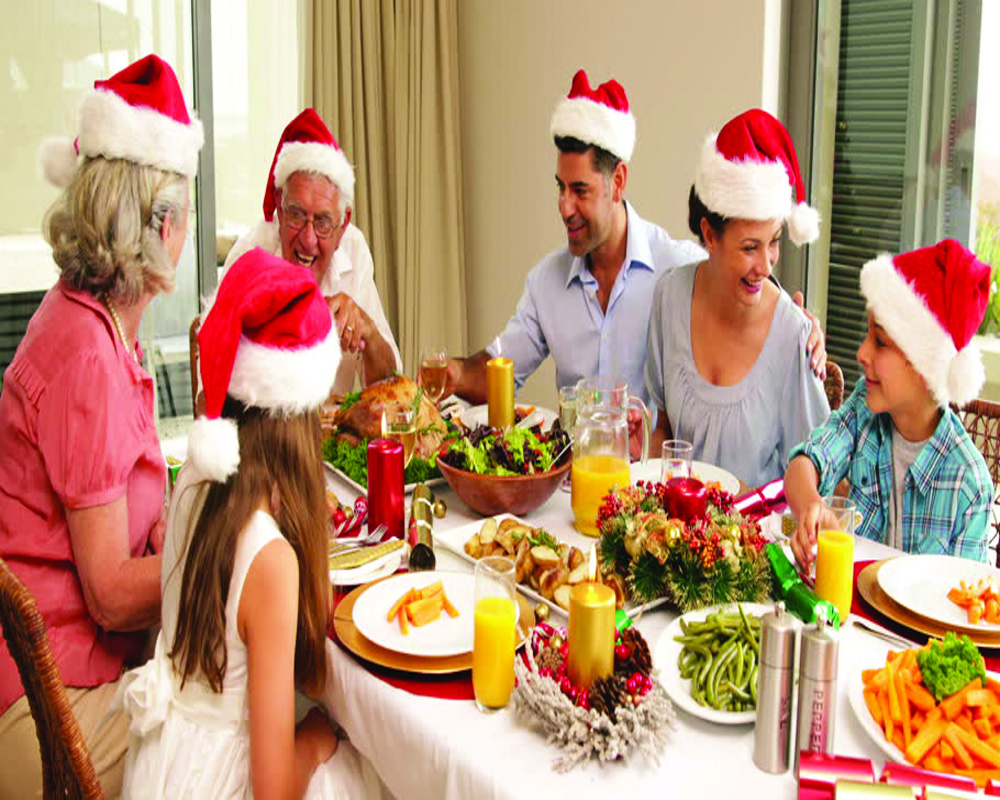This year, the size of family gatherings will be drastically reduced, restaurants will see limited dine-ins, home delivery of Christmas meals will play a significant role and we will all have more time to revisit our grandmother’s recipe book
The celebration of Christmas and the Gregorian New Year is a more recent phenomenon in India and are a British legacy. Obviously, the more recent globalisation of our world, the mass media and a much more interconnected world have also played a major role in promoting these two events.
In most Western Christian cultures, the Christmas meal consists of two meals — the dinner of the December 24 evening and the lunch of December 25. Both these meals are traditionally enjoyed in the intimacy of private homes and great care and attention is given to their preparation which can, in some cases, take several days. This includes the selection of the menu, purchasing of the ingredients, the actual cooking, setting a festive table and serving the food.
On Christmas Eve, the meal is followed by attendance at the midnight mass and children cannot wait to go to bed in order to allow time for Santa Claus to bring the presents…
As to the type of food served during Christmas, it is always associated with traditions. Since you come together in family, naturally you look for the tastes and flavours of your childhood, a time when the magic and mysteries of the gifts appearing under the Christmas tree still marvelled you. In most cases there is little appetite for change and innovation. On the contrary, one looks for “old†grandmother recipes hidden in some notebook in the attic or carefully kept in the memory box or the library.
In the Northern Hemisphere, Christmas falls in the wintertime and understandably the weather dictates to a large extent the type of foods which are served during the celebrations. It is not uncommon that the Christmas menus are copious, not highly recommended for calory-conscious individuals or alternatively calling for serious workout and restraint after the celebrations.
In more recent times, with greater professional mobility and the reduction of the size of families it has become more difficult for the extended families to come together for the celebrations and there is an increasing trend to celebrate the two Christmas meals outside one’s home in restaurants where you meet with friends. Though still largely a “traditional†meal, nevertheless more innovations are happening in these “out of home†settings.
In European countries, a large variety of meals are served for Christmas. Often, they express not only food but also contain a symbolism. For instance, in Bulgaria, the Christmas meal may consist of seven, nine or 12 courses which represent the seven days of the week, nine months of pregnancy or the 12 months of the year. In South of France, 13 desserts are served which represent the 12 apostles and the Christ. In Hungary, it is not only the food which is festive but also the tablecloth which is of great significance.
In several countries, there are products specially made for the Christmas and New Year celebrations. In Germany and Austria hot wine is an integral part of the Christmas landscape. In Italy, the delicious Panettone and Pandoro announce the arrival of the festive season. In France, the Bûches (Yule Logs) and the incomparable Galette des Rois are deeply associated with the celebrations. And obviously, Christmas Pudding, Plum Cake and the Christmas Biscuits are very popular in English speaking countries.
In my home country France too, there are varieties in terms of Christmas foods, depending on the region where you come from. In some regions fish is the centrepiece of the menu whereas in others meat is what we call the “plat de resistance†or the main dish. There are though, some elements which are common to all regions such as seafood, particularly oysters and foie gras which belong on the table of all those who can afford it. And naturally, one of the all-time favourites all over is the roasted turkey with the secrets of the stuffing which are transmitted from generation to generation.
With changing eating habits, some fundamentally revolutionary such as veganism, many of the traditional Christmas foods are put in question — even though for a small but growing minority — though new lasting creations have yet to emerge.
In India, we observe a microcosm where the different Christmas traditions and foods, mainly originating from Europe find their expression. The increasing commercialisation of the festivities is reinforcing and accelerating this process. Households with affinity to one or the other European country find inspiration in their Christmas food menus as do restaurants which are specialised in serving European or American foods.
Like all other aspects of life, Christmas 2020 and New Year 2021 have been and will be affected by the COVID crisis. This year, the size of family gatherings will be drastically reduced, restaurants will see the number of dine-ins restrained, home delivery of Christmas meals will play a significant role and we will all have more time to revisit that recipe book handed over from our grandmother and try our hands on one of its Christmas secrets.
(The writer Kazem Samandari is Executive Chairman, L’Opéra.)


























